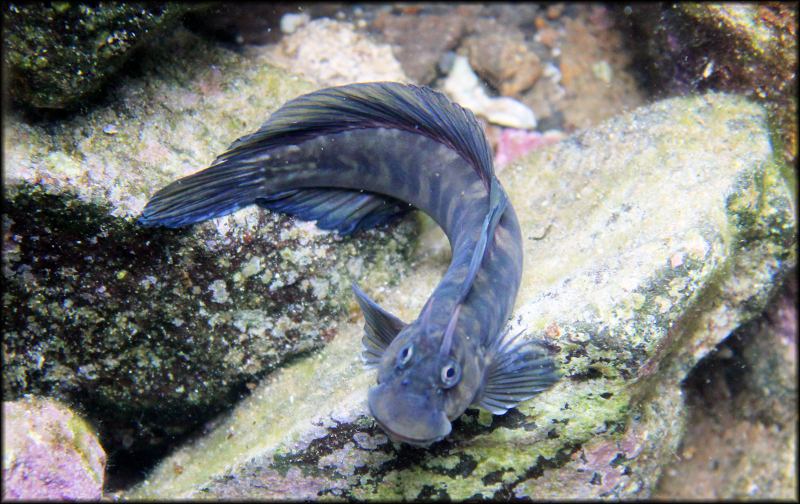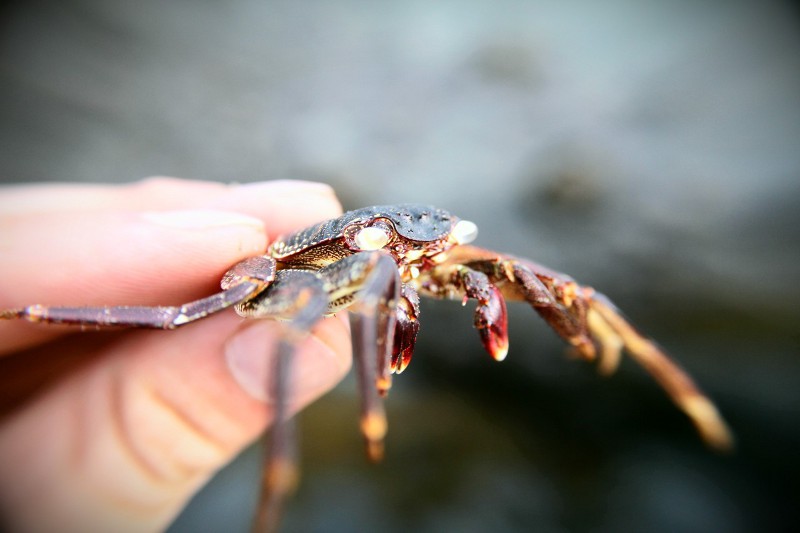
Tidepools are a common sight around Hawaii, especially on Big Island which has more rocky coastline and fewer sandy beaches. An astonishing variety of life can be found in these small pools that sit in the grey area between the land and the sea.
A lava shoreline is porous and in many places pockets of air will become trapped beneath overhangs, in caves, or in lava tubes beneath the water line. Wave action puts pressure on these air pockets and, wherever possible, pushes it up through cracks in the rock where it can often be heard hissing out of bare lava (it sounds like heavy breathing), or bubbling up through tidepools. When this happens the tidepool becomes more oxygenated (think fish tank bubbler), and if it’s in an area without much wave action or surface movement these bubbles allow for plant and animal life where the water would otherwise be too stagnant to support such things.
What one witnesses while walking an elevated lava shoreline are many vacant pools with dabs of brown algae punctuated by small oxygenated oasis of fish and invertebrates where bubbles trickle up and create an explosion of animal life on an otherwise monochrome seashore.
Opihi (Limpets) are found on most Hawaiian shores and were considered a delicacy in ancient Hawaii. There are a few people who still sell them now, but not many non-hawaiians find gastropods enticing. Opihi are members of the snail family. They live in the intertidal crash zone and can hold onto rocks with enough force to crack a knife in two.

On any rocky shore in the Hawaiian islands you’ll find empty exoskeletons from A’ama, the Hawaiian Rock Crab. When decapods shed their shells they can change their body size by up to 10%, and they can do so in either direction. If there’s plenty of food around they can grow by 10%, but if food is scarce they can also shrink by 10% so that they require less. Survival of the fittest isn’t always survival of the biggest. Sometimes shrinking your body to require less food means that you’ll be able to survive a lean season, and then grow once food is plentiful again.
Zebra Blennies are another common tidepool sight. An endemic Hawaiian fish, these animals are uniquely suited to tidepool life. With the ability to jump up to 8 feet at a time and travel over dry land, they can be found in even the most remote pools. When the pool dries up the Zebra blenny simply hops to a new one. They may be difficult to spot, as their vision is superb and as soon as they see you they’ll hide, but if you stand and wait without moving they’ll usually come back out after a few moments.
Other tidepool animals include echinoderms like the helmet urchin and the rock boring urchin. Sea cucumbers of several varieties are common as well.
Hawaiian tidepools provide a rare glimpse at undersea life that would otherwise only be viewable with a mask and fins. These tiny biomes are fragile. Always remember “Malama o ke kai, ke kai o ke malama” – “Take care of the ocean and the ocean will take care of you.”
